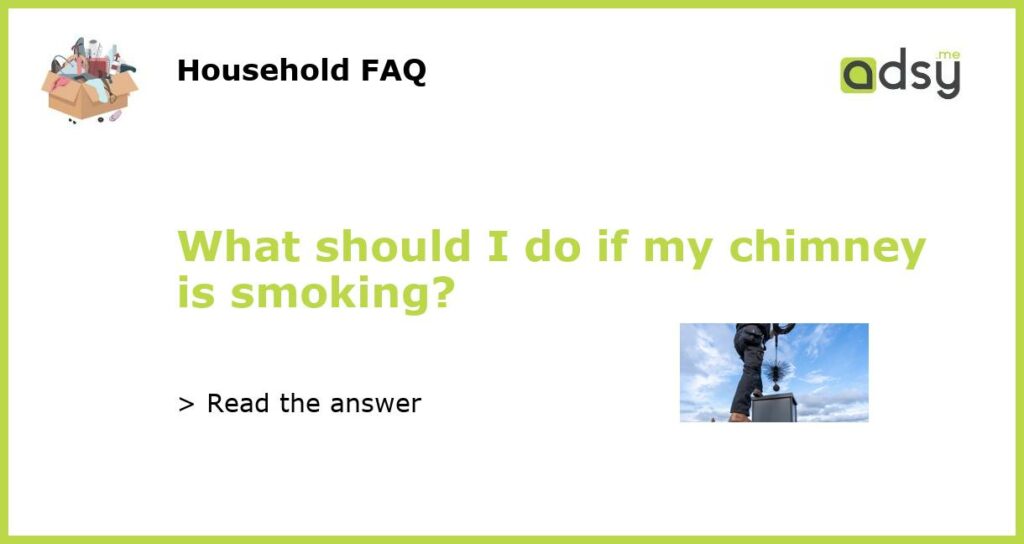Understand the possible causes
When your chimney is smoking, it can be a frustrating and potentially dangerous problem. There can be several causes for a smoking chimney, so it’s important to understand the possibilities before determining the best course of action.
One common cause is a blockage in the chimney. This can occur from a build-up of creosote, a flammable substance that can accumulate over time. Other blockages can include nests or debris from animals, or even structural problems like a collapsed chimney liner.
Another potential cause is insufficient draft. This means that there may not be enough air flow to properly vent the smoke from the chimney. This can happen if the chimney is too short or if it doesn’t have the right design to create the necessary draft.
Finally, a smoking chimney can also be caused by negative air pressure in the home. This can occur when other appliances, like exhaust fans or dryers, are competing for air with the chimney. The result is that the smoke from the chimney is pushed back into the home instead of being vented outside.
Have your chimney inspected and cleaned
If you’re experiencing a smoking chimney, the first step is to have it professionally inspected and cleaned. A certified chimney sweep can assess the condition of your chimney and identify any potential issues that may be causing the smoking.
If there is a blockage, whether it’s creosote, debris, or an animal nest, the chimney sweep can remove it safely and thoroughly. This should help improve the chimney’s performance and reduce or eliminate the smoke problem.
Regular chimney cleaning and maintenance is essential to prevent blockages and ensure the safe operation of your fireplace or wood-burning stove. It’s recommended to have your chimney inspected and cleaned at least once a year to keep it in optimal condition.
Make necessary repairs or modifications
If the inspection reveals any structural issues with your chimney, it’s important to address them promptly. A damaged or collapsed chimney liner, for example, can cause smoke to back up into the home and present a significant fire hazard.
In some cases, modifications may be needed to improve the draft of your chimney. This could involve extending the height of the chimney, installing a chimney cap or a draft-inducing chimney fan, or making changes to the design of the chimney itself.
Consulting with a professional chimney sweep or a chimney specialist can help you determine the best course of action based on the specific characteristics of your chimney and the issues causing the smoking.
Improve ventilation in your home
If the smoking chimney is a result of negative air pressure in your home, there are steps you can take to improve the overall ventilation. This can help alleviate the competition for air between the chimney and other appliances.
One option is to install air vents or registers near the fireplace or wood-burning stove to provide additional air intake. This can help balance the air pressure and allow for proper venting of the smoke.
You can also make sure that any exhaust fans, like those in the kitchen or bathroom, are not running at the same time as the fireplace or wood-burning stove. This can help minimize the negative air pressure and reduce the likelihood of a smoking chimney.
Consider alternative heating options
If you’ve tried all the previous steps and your chimney is still smoking, it may be worth considering alternative heating options. There are many efficient and clean-burning alternatives to traditional wood-burning fireplaces or stoves.
Gas or electric fireplaces, for example, can provide the warmth and ambiance of a traditional fireplace without the smoke or maintenance requirements. Pellet stoves are another popular option, as they burn compressed wood pellets and produce minimal smoke.
Consulting with a heating professional can help you explore these alternatives and find a heating solution that meets your needs and preferences.

